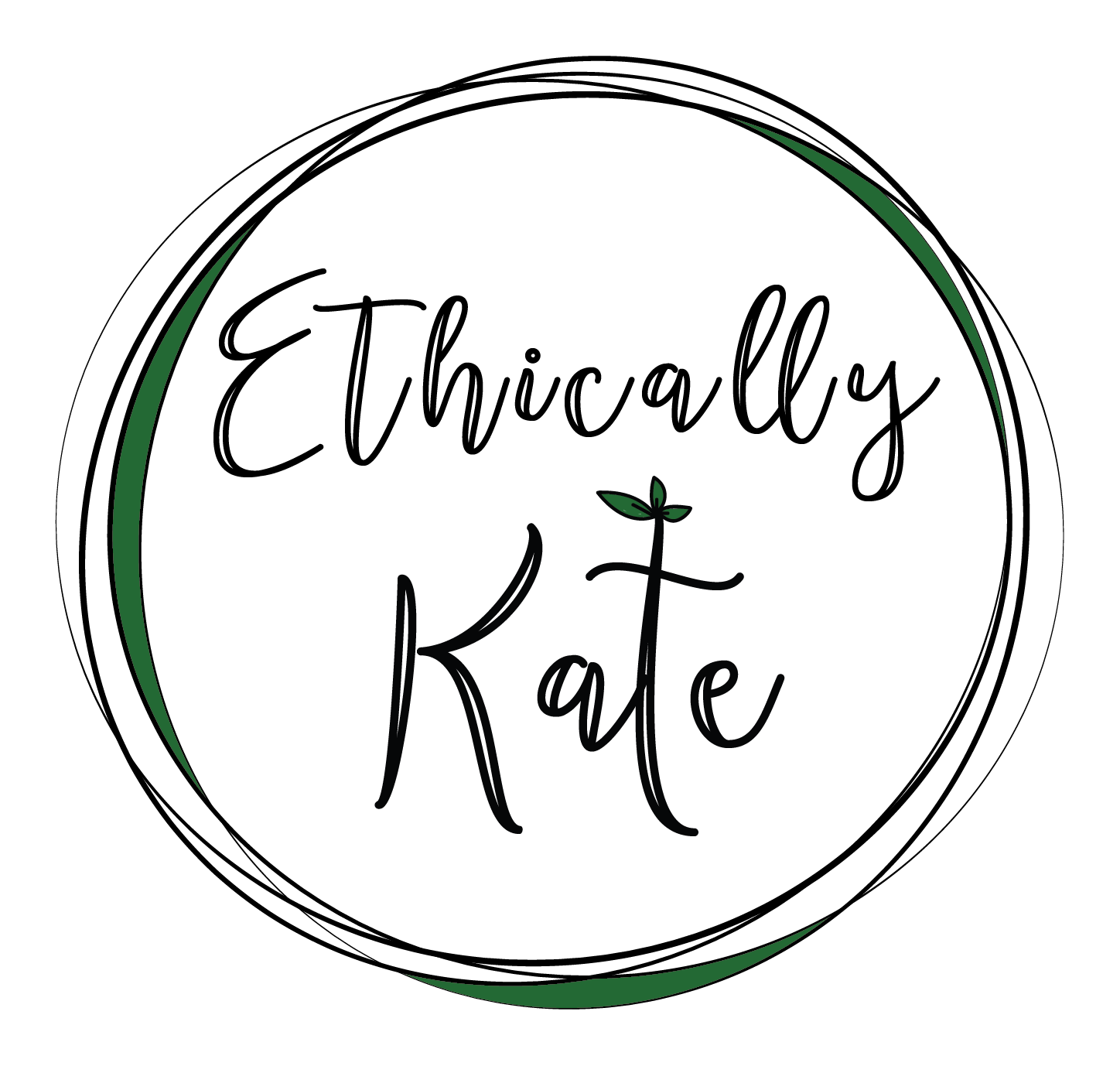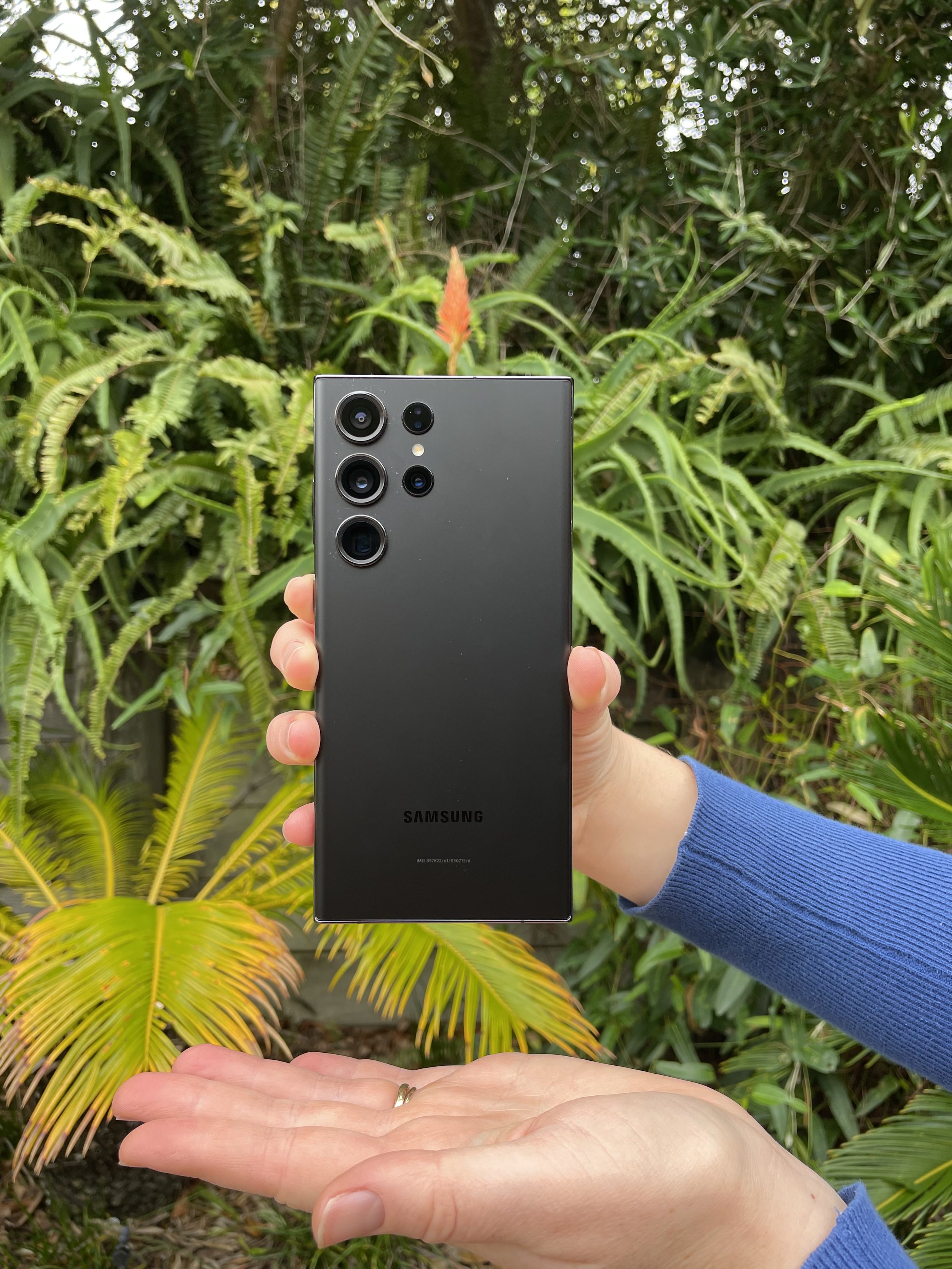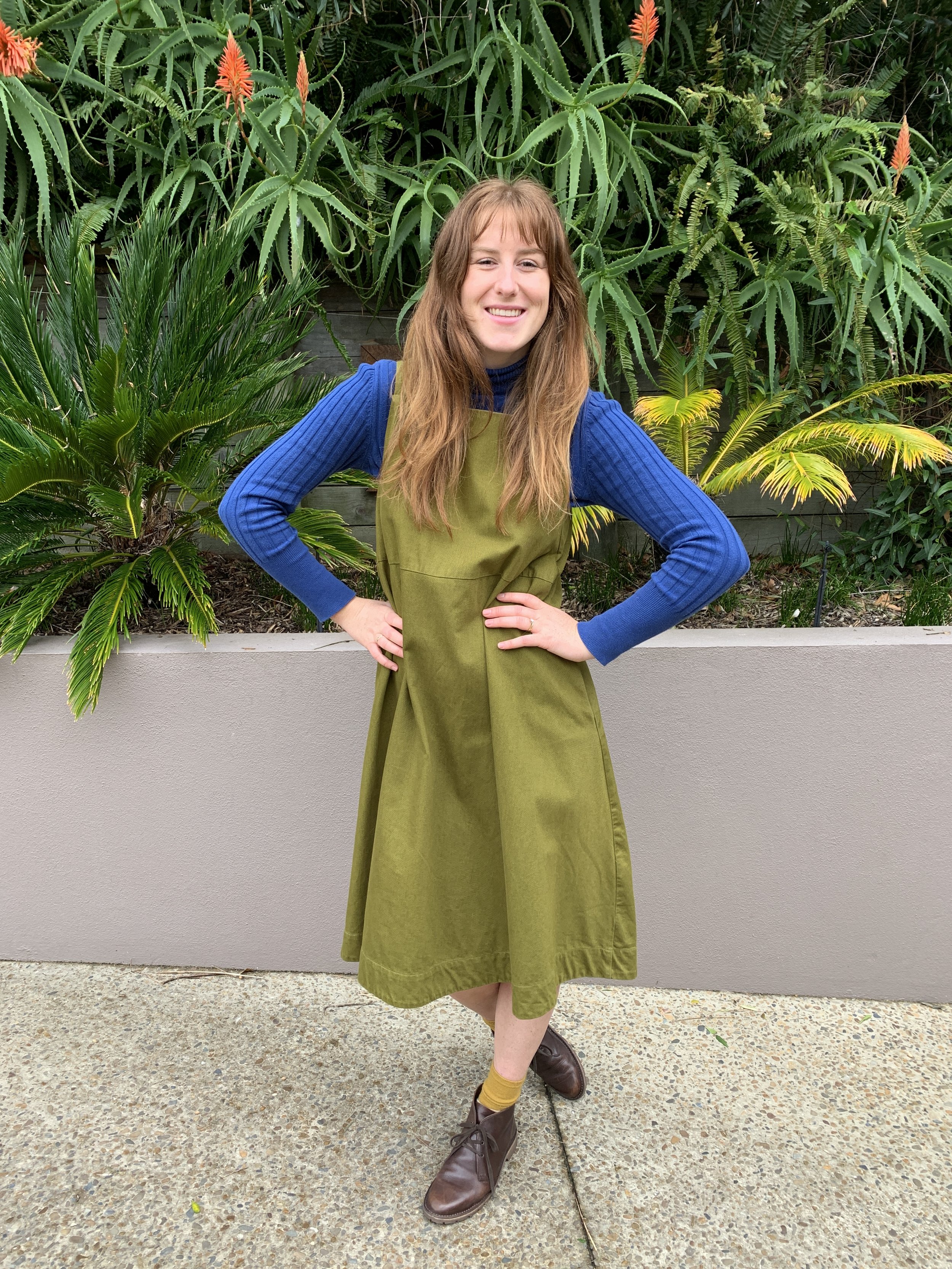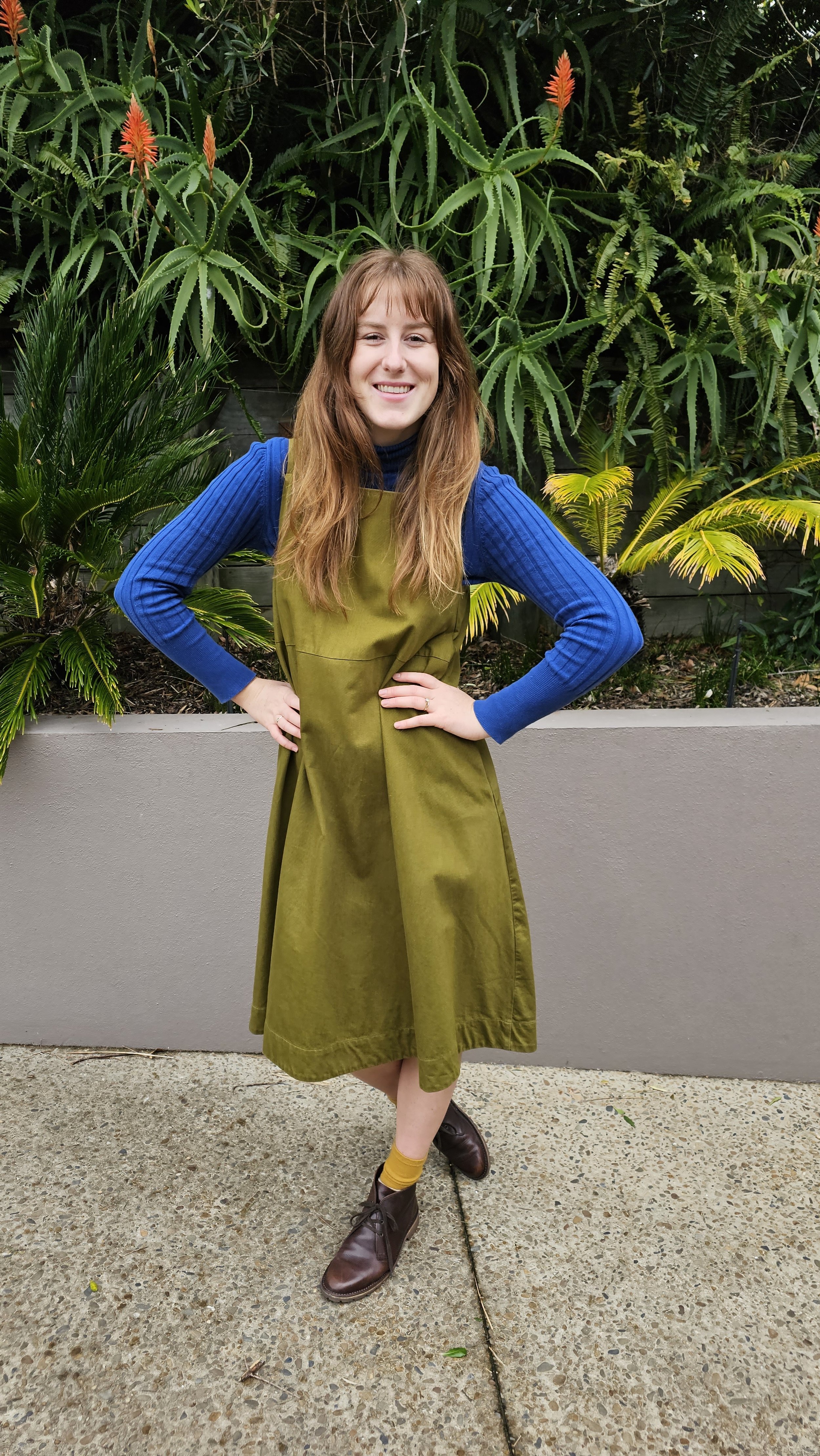What Is The Most Sustainable Phone?
Like all movie trailers, I am about to giveaway the ending: I recently became an ambassador for Samsung. As a sustainability educator and influencer (I prefer the word ‘inspirer’) I never thought I would say those words. But I am proud to work with them, I have the new Samsung S23 Ultra, and this decision was not made lightly.
My choice to work with Samsung was made when I asked the question: “What is the most sustainable phone?”
I don’t think there is one answer to this question or even one phone to rule them all (the most sustainable phone is probably the one already in your hand!). But in my usual candid style, here’s how my ambassadorship came to be, why I chose Samsung, and why the Samsung S23 Ultra is the most sustainable phone for me.
I have a manager, Megan (she’s the best), who coordinates all my content creation partnerships and work. When an inbound request from a brand who wants to utilise my content creation services comes in, I send them to Megan. Additionally, when companies contact We Are Tenzing (the agency Megan works for), they look at their talent pool (that includes me) and see who would fit what the company is working for. Some companies also go directly to Megan when they want a bit of me.
Samsung wanted a bit of me.
So in December 2022, Megan asked "Hey, do you want to work with Samsung?"
I immediately screwed up my face and said 'umm probably not'. I knew they were a big corporation who made a lot of stuff and probably were not into sustainability in a genuine way. But to give them the benefit of the doubt, I did what I usually do when companies I don't know well request to work with me. I asked Stef, my researcher, to deep dive into Samsung and see what they were up to.
The results were surprising and exciting. Here are the brief raw bullet points:
Transparency
Publicly shares annual sustainability reports, gender stats within their company, what conflict materials are used and which materials have certifications.
Social Responsibility
There are various ERGs (employee resource groups) on gender, LGBTQ+, race, working parents, and veterans in different regions, including the US, Europe, Latin America, and Southwest Asia.
Launched a large collaborative Girls in STEM programme in China with high schools.
List Data on Women at Samsung (Global) by work function (tech, executive, sales, managers) and by year and this has increased steadily since 2016.
Launching a program/competition called Solve for Tomorrow in NZ (rolled out in the Pacific Islands sometime during 2023)
Suppliers
They provide some suppliers with staff leadership and expertise training, technology and 'Smart Factory support'.
Labor rights - Samsung request suppliers satisfy the criteria set in 20 articles, including voluntary work, compliance with work hour regulations, and ban on discrimination. Prohibition of child labor, guarantee minimum wage, and prohibition on inhumane treatment.
Environment and safety - Samsung request suppliers to satisfy the criteria set in 22 articles, spanning occupational safety, fire prevention equipment, occupational health, hazardous substances, and environmental facility. Nine mandatory compliance items : Fire prevention equipment, hazards and waste, sewage and wastewater facility, etc.
Provide third party safety audits for supplier sites.
Management of Conflict resources
Minerals due diligence process based on OECD Due Diligence Guidance for Responsible Supply Chains of Minerals from Conflict-Affected and High-Risk Areas.
They list on their websites what conflict resources they use and for which they have certifications, at the moment that is 4/5 minerals.
Environment: They have a long term plan for product development, manufacturing, and consumer services in their sustainability plan with a big focus on repairability, durability and resource recovery:
Extend product lifespan by providing remote and expert diagnosis services, more service centres for repairs and a network of professional repair services.
Enhance product performance, upgrade firmware, and extend product warranty.
Operate recycling programs in each country, extract and reuse materials from waste products, run a closed-loop recycling system for waste resources (Aotearoa New Zealand is currently one of the only OECD countries that they do not have a partner recycling programme with - it goes to Australia). They want to expand this to take-back programmes in every country.
Plan products that consume less energy and resources.
Design products that are easy to disassemble and recycle.
Plan to remove all plastic packaging and replace it with paper/card or other bio-materials. Currently all paper packaging used is forest-certified paper, 100% recycled paper only.They have a net zero carbon goal for the global entity by 2040.
Goals for reducing water, power and hazardous chemicals in manufacturing sites as well as overall zero waste to landfill.
Established a closed-loop recycling scheme for waste plastic.
They achieved a waste recycling rate of 96% in 2021 and semiconductor business sites succeeded in accomplishing zero waste to landfill for the first time in the industry. Zero waste to landfill initiatives are officially verified through a third-party.
This was Stef’s summary paragraph:
"This one took some reading as they have a lot of information out there but I have to say, I was pleasantly surprised! As you assumed, they could always be better but they do seem to really be putting in the work to be socially and environmentally responsible and to have a positive impact."
So instead of saying "eew no thanks Megan" I told her to let Samsung know I am interested while I did some more research.
Separate to Samsung's interest in my content creation, I knew I needed a new phone this year. My five year old iPhone XR is beginning to slow down. A phone is my main work tool; I need my phone to keep up and be epic.
With this in mind, I asked Stef to do another piece of research, this time with a new non-biased angle:
"If I were to buy a new phone, what would it be?"
This is where our search for the most sustainable phone truly began.
I told Stef to keep in mind that I need a phone with a great camera, something accessible (the ‘Fairphone' does not ship to New Zealand), and good quality. I also wanted this piece of research to be helpful for my readers. Let's face it: everyone has a phone and most people have smartphones. The top three main companies: Samsung, Apple, and Huawei.
Yes, second hand phones are great, but often they are not. My current iPhone is my first brand new phone. The phones before that were refurbished and second hand, often costing me more because of repairs and lasting for such a short time that I felt like I was always getting a new (to me) phone. I've also had a bad run with second hand electronics and appliances in the last few years, so for some types of items, second hand isn't all that accessible and lovely as it sounds. If second hand works for you, rock it! But this is my experience, particular as someone who uses their phone as their main tool for making a wage.
Back to our research focus… We deducted that if someone is going to buy a phone, it is most likely to be from one of the three most accessible companies (Samsung, Apple, Huawei). So, which one is the best?
With this question in mind, we created a spreadsheet that compares many different elements of a phone and these three main companies in general.
Samsung came out on top. Not just by a little bit; by a lot.
I went back to Samsung and said "I’m impressed! But what about the compatibility of your phones with my computer (a Macbook)."
We had Zoom meetings. I also met their range of phones in person. I asked lots of questions.
And with that, 4 months after the opportunity arose, we signed a partnership.
I’ve been using my Samsung S23 Ultra since the beginning of May. I won’t lie, when the handover day arrived and Samsung literally (well… nearly) held my hand as I made the switch across, I was deeply nervous. Changing from a system I had been using innately for over a decade was daunting. I was scared of the change and ready for the huge adjustment period. Perhaps it was my ‘preparing for the worst’ attitude or maybe the way Samsung has developed their new phones to be so intuitive, but the change has been smooth sailing! I love it!
My favourite features so far:
The S pen (a stylus pen) which also has a little button that works as a camera remote when I am taking photos on a tripod!
Charging feature: I can charge my friend’s phones by simply resting their phone on mine.
The camera: the quality is amazing and I can even take high quality photos of the night sky.
The screen quality: watching Netflix is crystal clear and editing videos is a dream.
The S23 Ultra has an UL ECOLOGO® certification. This means the Samsung S23 Ultra has been through exhaustive auditing to prove its compliance with stringent, third-party environmental standards. These standards set metrics for a wide variety of criteria such as: materials, energy, manufacturing and operations, health and environment, product performance and use, and product stewardship and innovation.
I can extend my device’s life through four generations of UI upgrades and at least five years of security updates.
Left: Taken by my iPhone XR. Right: Taken by my Samsung S23 Ultra.
My guess is that you’re reading this blog on a cellphone. My second guess is that one day it will break beyond repair. Though I sincerely hope that it will last many more years, when it does come time to replace it, I also hope you think before you buy a new one. Consider the spreadsheet, think about what type of functions you need your phone for, and make a conscious purchase rather than a trend based one (I am so glad to be off the iPhone bandwagon!).
*I only work with brands I love, use, and support. This is a sponsored blog but 100% my own words, photos, and opinion.





